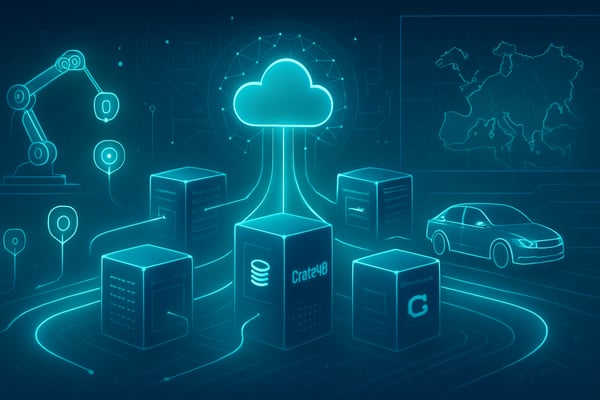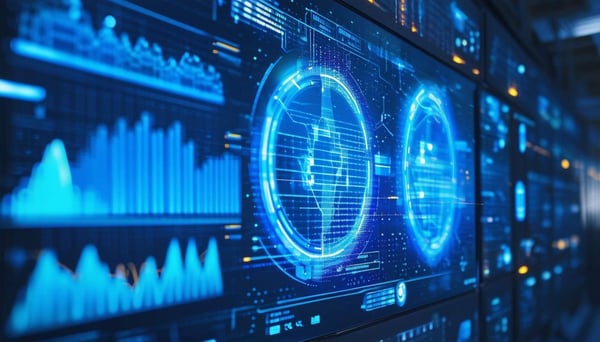Introduction to Digital Twins
Digital twins are virtual representations of physical objects, processes, or systems in the digital realm. By integrating real-time data, analytics, and simulation models, they create a dynamic, virtual counterpart of a physical entity. This technology enables organizations to gain deeper insights into their assets and operations, leading to improved performance, cost savings, and better decision-making.Digital twins continuously collect data on operational status, environmental conditions, and user interactions. This information is gathered from sensors, user inputs, and various data sources, ensuring that the virtual model accurately reflects the real-world object in real time.
To function effectively, digital twins require both real-time and historical data, high data accuracy, and a wide range of data types, including sensor readings, operational metrics, and environmental factors.
A digital twin system typically consists of three key database components:
- Data ingestion layer – Collects and integrates data from multiple sources.
- Data processing layer – Analyzes and interprets incoming data.
- Data storage layer – Archives and manages historical data.
Digital twins are used across industries for applications such as predictive maintenance, process optimization, product development, and real-time monitoring. They play a crucial role in sectors like manufacturing, healthcare, and smart cities, driving efficiency and innovation.
- Predictive Maintenance: By monitoring real-time data from a physical asset, a digital twin can detect anomalies and predict maintenance needs, optimizing asset performance and reducing downtime.
- Performance Optimization: Digital twins enable continuous monitoring and analysis of various parameters, allowing for optimization of processes, systems, or products to enhance efficiency and effectiveness.
- Simulation and Testing: Digital twins can be used for simulating and testing scenarios, allowing for experimentation and evaluation without the need for physical prototypes.
- Product Lifecycle Management: From design and manufacturing to operation and maintenance, digital twins can provide valuable insights throughout a product's lifecycle, facilitating decision-making and improving overall performance.
Digital twins offer a way to bridge the gap between the physical and digital worlds. Whether it’s for predictive maintenance, performance optimization, simulation and testing or product lifecycle management, digital twins offer huge potential to improve operational efficiency and position enterprises for future growth.
CrateDB as the database for digital twins
CrateDB is a perfect database to underpin your digital twin initiative and significantly enhances the effectiveness and capabilities of digital twin implementations while reducing development efforts and optimizing total cost of ownership.
Comprehensive data collection and flexible data modeling
CrateDB can collect and store a wide range of data from various sources: real-time sensor data, historical data, geospatial data, operational parameters, environmental conditions, and other relevant information about the physical entity being modeled.
CrateDB offers the capabilities to store complex objects before even knowing what you want to model. New data types and formats can be added on the fly without any need for human intervention, removing the need of having multiple databases to synchronize.
Scalability and Performance
CrateDB is scalable from one to hundreds of nodes and can handle huge volumes of information. CrateDB also provides high-performance capabilities with query response time in milliseconds to process and analyze the data efficiently - including querying the twins and their relationships - ensuring real-time insights and responsiveness. There is no need to downsample or pre-aggregate the data.
Data Integration
CrateDB offers easy 3rd party integration with many solutions for ingestion, visualization, reporting, and analysis thanks to native SQL and the PostgreSQL Wire Protocol, drivers and libraries for many programming languages, and its REST API.
CrateDB offers advanced time-series capabilities, including instant access to data regardless of the volume of data, thanks to its distributed architecture with efficient sharding and partitioning mechanisms. It supports efficient storage, retrieval, and querying of temporal data to enable trend analysis, forecasting, and historical comparisons.
Metadata and Contextual Information
CrateDB offers a unique repository to store and retrieve metadata associated with digital twins. This includes information about the physical entity, data sources, data quality and modeling assumptions. Time-series data can be contextualized with this information in real-time. This way, you can easily switch from a technical view to a business view.
Data Analytics and AI Integration
CrateDB facilitates the integration of data analytics and AI technologies. It supports running complex algorithms, machine learning models, and statistical analysis directly on the stored data. CrateDB also provides APIs, drivers and the PostgreSQL Wire Protocol to connect with external analytics tools and platforms.
Webinar: Digital Twins & Gen AI on Azure
Explore how TGW, a global leader in logistics automation, digitally transformed warehouse operations using Azure. This session delves into the creation of automated warehouses and LLM-based internal Q&A system, answering general questions of employees, providing deep insights based on technical documentation and support tickets, and streamlining sales support.



